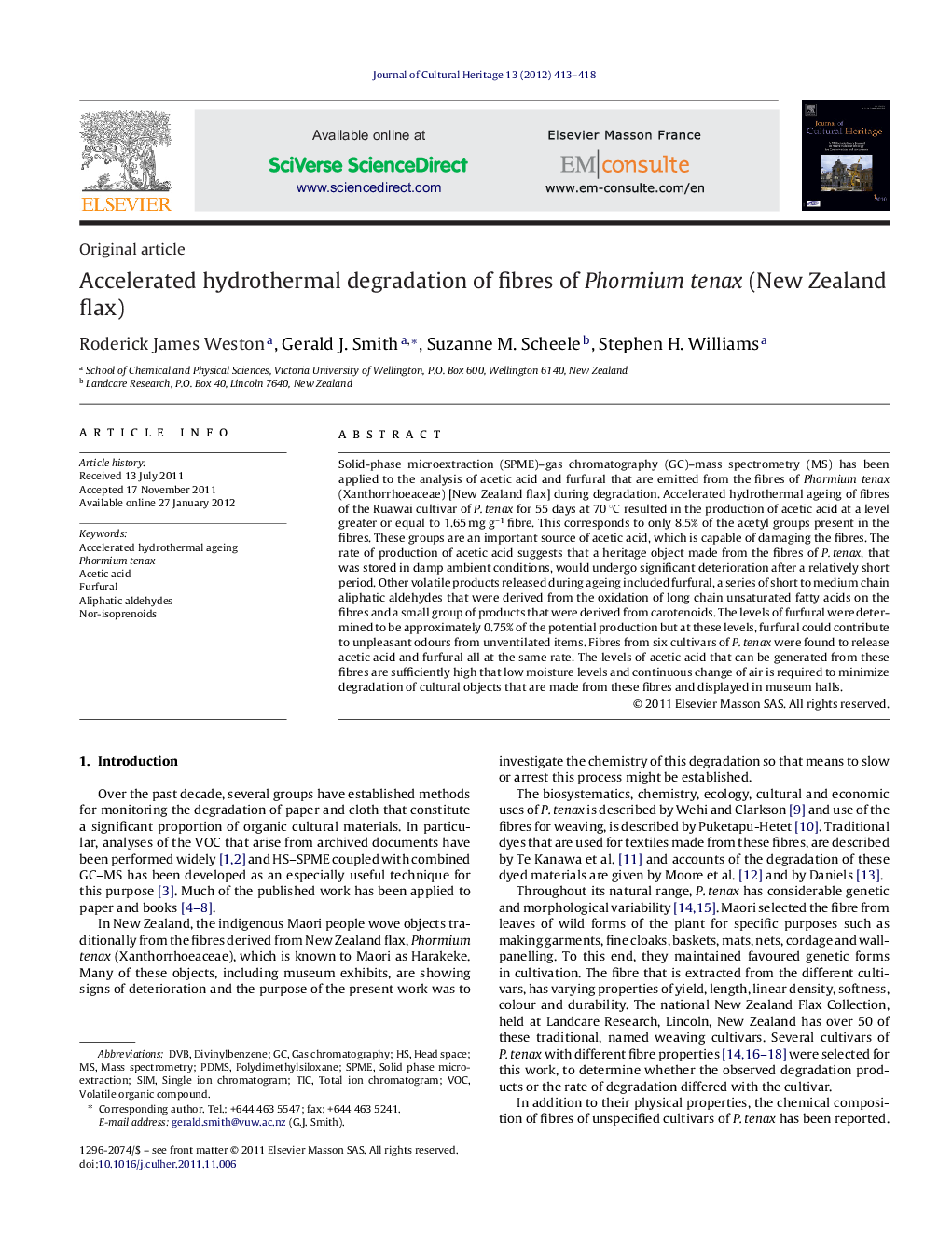| Article ID | Journal | Published Year | Pages | File Type |
|---|---|---|---|---|
| 1038446 | Journal of Cultural Heritage | 2012 | 6 Pages |
Solid-phase microextraction (SPME)–gas chromatography (GC)–mass spectrometry (MS) has been applied to the analysis of acetic acid and furfural that are emitted from the fibres of Phormium tenax (Xanthorrhoeaceae) [New Zealand flax] during degradation. Accelerated hydrothermal ageing of fibres of the Ruawai cultivar of P. tenax for 55 days at 70 °C resulted in the production of acetic acid at a level greater or equal to 1.65 mg g–1 fibre. This corresponds to only 8.5% of the acetyl groups present in the fibres. These groups are an important source of acetic acid, which is capable of damaging the fibres. The rate of production of acetic acid suggests that a heritage object made from the fibres of P. tenax, that was stored in damp ambient conditions, would undergo significant deterioration after a relatively short period. Other volatile products released during ageing included furfural, a series of short to medium chain aliphatic aldehydes that were derived from the oxidation of long chain unsaturated fatty acids on the fibres and a small group of products that were derived from carotenoids. The levels of furfural were determined to be approximately 0.75% of the potential production but at these levels, furfural could contribute to unpleasant odours from unventilated items. Fibres from six cultivars of P. tenax were found to release acetic acid and furfural all at the same rate. The levels of acetic acid that can be generated from these fibres are sufficiently high that low moisture levels and continuous change of air is required to minimize degradation of cultural objects that are made from these fibres and displayed in museum halls.
